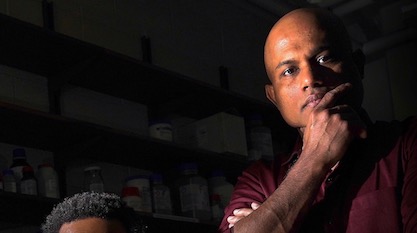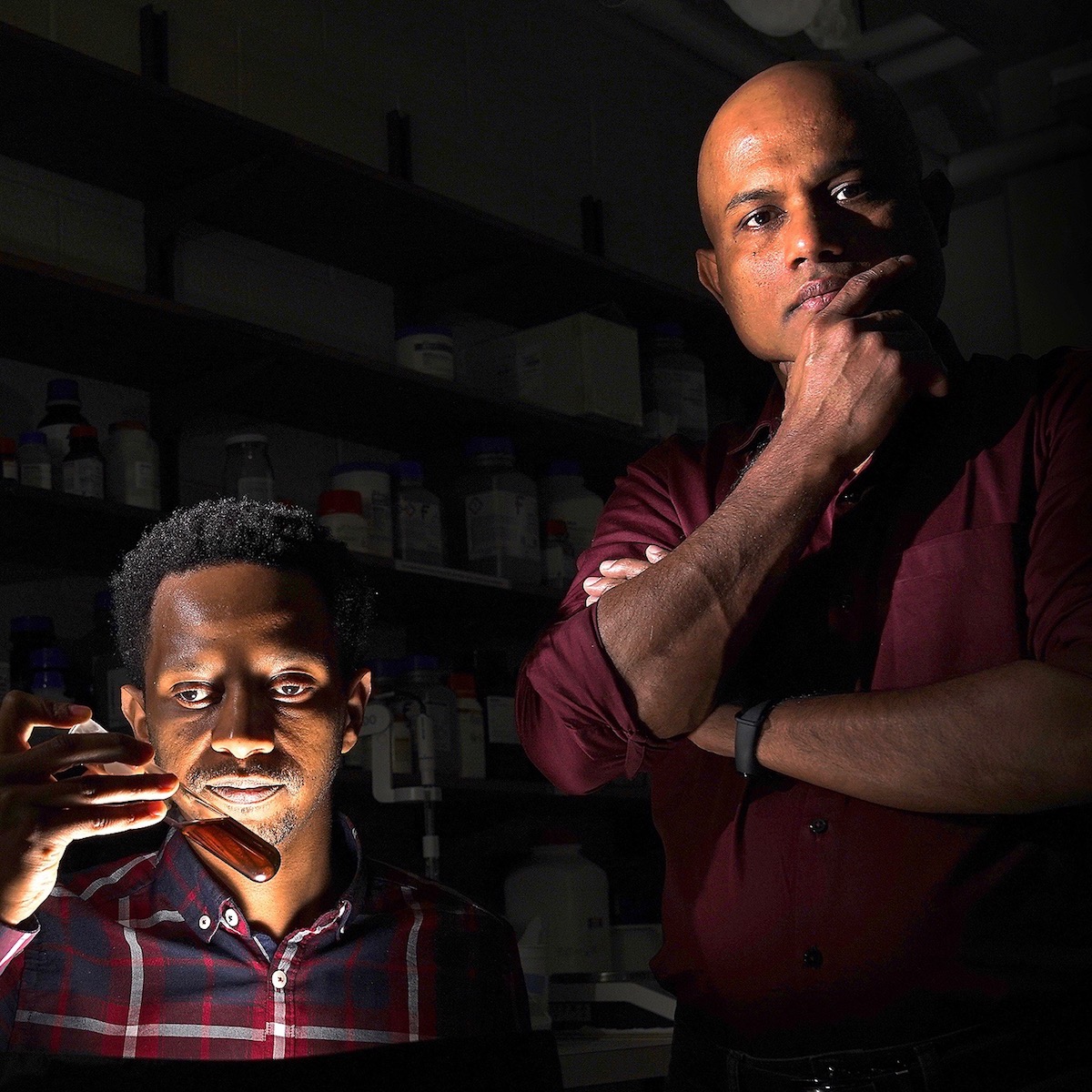 Intelligent Design
Intelligent Design
 Life Sciences
Life Sciences
Informed Choice Seen in Cellular Nanomachines


To Darwin, everything we see now under the microscope was so simple. Would he have even considered a blind, unguided mechanism if he had today’s knowledge? Imaging techniques approach the one-nanometer scale, revealing tightly regulated molecular mechanisms that showcase foresight and engineering design.
Microtubule Template
Eukaryotic cells have a “skeleton” made of microtubules that grow and shrink according to demand. The building blocks of microtubules do not just self-organize. They are assembled with an irreducibly complex molecular machine named γ-TuRC. It was imaged at “molecular resolution” with cryo-electron microscopy (cryo-EM) at Heidelberg University recently. It is both beautiful and functional. To appreciate its beauty, look at the image for yourself. It’s an elegant spiral whose precise operation is no less beautiful:
Microtubules, filamentous structures within the cell, are required for many important processes, including cell division and intracellular transport. A research team led by scientists from Heidelberg University recently discovered how the spiral-shaped, modular microtubules are formed and how their formation is controlled. These processes were visualised using state-of-the-art cryo-electron microscopy (cryo-EM).
“To assemble microtubules from their individual components, the cells use structural templates that mimic one layer of the microtubule helix and can serve as a starting point for the newly forming microtubules,” explains Dr Stefan Pfeffer, junior research group leader at the Center for Molecular Biology of Heidelberg University (ZMBH). In human cells, the gamma-tubulin ring complex (γ-TuRC) serves as such a structural template. To more accurately understand how it influences the formation of microtubules, the scientists used cryo-EM for determining the structure of the γ-TuRC at molecular resolution. The study elucidates in detail how the γ-TuRC is structurally organised and how its approximately 30 different subunits are assembled. It also clarifies how the formation of microtubules on γ-TuRC can be quickly regulated by a simple change in the ring diameter. [Emphasis added.]
If five necessary parts qualify for irreducible complexity, how about 30? The improbability of chance formation of a machine skyrockets rapidly as required components are added. How precisely regulated is this molecular machine? When γ-TuRC doesn’t work right, cancer can result, the scientists warn. The forthcoming paper in Nature doesn’t seem to rely on evolutionary ideas.
Demonic Decisions
A scientist at the University of North Carolina (UNC) has found a gating mechanism in cells that acts a bit like “Maxwell’s Demon,” a mythical entity able to overcome the Second Law of Thermodynamics by separating molecules that would otherwise randomize. Dr. Charles Carter sees an analogous mechanism in certain enzymes that can exercise informed choice over outcomes. He wrote about one in the journal Proteins.
The machine in question is an enzyme called tryptophanyl-tRNA synthetase, or TrpRS, which can use the chemical energy stored in the universal fuel molecule — Adenosine triphosphate (ATP) — to ensure that whenever the sequence of any gene specifies tryptophan, the amino acid tryptophan is inserted into the sequence of linked amino acids that compose the translated protein. By assuring that the correct amino acid is selected, TrpRS therefore translates the genetic code for tryptophan when any of the tens of thousands of genes in human cells is translated into the corresponding protein. Translating the code into the amino acid sequence specified by the gene gives the newly created protein sequence the information telling it how to fold up and exert nanoscale control over some aspect of cellular chemistry.
Carter doesn’t expect to image little demons in cells, of course, but something must be responsible for “the sleight of hand that sustains living things, such as humans who live in a chemical state far from equilibrium.” What could it be? It would have to be something made with foresight, in order to mimic the non-random choices that a Maxwell Demon would make. That means it is definitely not a Darwin Demon.
An illustration shows a familiar machine able to drive reactions one way. It’s a clock of sorts, with gears and an escapement mechanism that guarantees unidirectional motion. That’s the kind of mechanism Carter found in TrpRS. “Scientists are increasingly recognizing escapement mechanisms as fundamental to all cellular processes,” the article states. Carter is excited about how a long-predicted design has been discovered:
“It is likely that most or all of life’s motors and signaling devices that use either ATP or GTP will exhibit comparable gating mechanisms,” Carter said. “Scientists have known for 75 years that such mechanisms must exist. It is thrilling to uncover such a complete example of how gating mechanisms work together to ensure that we waste so little of the fuel we consume.”
Plant Photosynthetic Regulation
Photosynthesis was a black box in the 1960s, but now much more is known. Scientists identify “Photosystem I” which operates at long wavelenths of light (toward the red), and “Photosystem II” which operates at shorter wavelengths of light (toward the blue). Electron flow is vital to the “photo-synthesis” of sugars using energy from sunlight. Much of the machinery leading up to that production, therefore, involves obtaining electrons from the antenna complexes, and storing them in the “plastoquinone pool.” The pool buffers the flow of electrons so that it remains constant in different light intensities and color conditions.
Maintaining a steady supply of electrons requires precise regulation, or else shortages or oversupply could result. An oversupply is dangerous, because it can lead to the production of toxic free radicals. Scientists at Purdue University discovered how a key regulator protein, called CSK (chloroplast sensor kinase), works to maintain the “delicate balance of electrons” for the photosystem complexes. CSK contains an iron-sulfur cluster that acts as a sensor.
The cluster helps it to sense the presence of electrons and thereby send signals to the gene expression machinery in plant chloroplasts to turn photosystem genes on and off.
Purdue scientist Sujith Puthiyaveetil and his team examined the protein, noticing its brown color. The color indicated the presence of the iron-sulfur cluster. Puthiyaveetil says,
“By examining the cyanobacterial, plant and diatom CSK proteins, we’ve discovered that CSK uses an iron-sulfur cluster to sense the electron transport, assessing how well the electrons are flowing, and make adjustments in the relative abundance of plant photosystems to keep photosynthesis working correctly and protect the plant from oxidative stress.”
CSK acts like a three-way switch, with each position causing a different result.
“The two photosystems are like two photovoltaic cells connected in series,” Puthiyaveetil said. “They should convert light energy at equal rates for optimal electron transport. If the electron transport is not balanced, you get free radicals that can damage the plant’s photosynthetic machinery and hurt or kill the plant.”
Purdue scientists determined that CSK’s iron-sulfur cluster acts as a sort of magnet for those extra electrons. When the plastoquinone pool becomes reduced, meaning it has excess electrons, those electrons leak into CSK and turn off its kinase activity.
When kinase activity is interrupted, CSK stops transferring phosphate groups to the chloroplast gene expression machinery, turning on photosystem I genes and increasing its amount and therefore activity in short wavelength light. In essence, when CSK’s kinase activity is on, it serves as a brake pedal for photosystem I gene expression.
CSK can therefore sense the flow, turn genes on and off, and put brakes on one or the other photosystem. The iron-sulfur sensor activates the correct option to optimize production of sugars. The team calls this an “elegant regulatory mechanism in the photosynthetic processes of plants.”
Why, then, do they attribute it to evolution? What purpose do these statements serve?
- “[T]he chloroplast sensor kinase (CSK) protein is equipped with an evolutionarily conserved iron-sulfur cluster.” If it is conserved, it wasn’t evolving. The adjective “evolutionarily” adds nothing.
- “CSK is an ancient protein found in both cyanobacteria and chloroplasts.” How old it is according to believers in evolutionary common descent doesn’t matter. What matters is how it works.
- “More than a billion years ago a cyanobacterium took up residence inside a eukaryotic host cell and became the chloroplast of plants and algae,” Puthiyaveetil says. Nobody saw that happen, and it’s a controversial just-so story that acts as a sideshow. (“The origin of eukaryotes remains unclear,” Nature says in a new paper, undermining confidence in the dogmatic story told here.)
The fact that cyanobacteria, diatoms, and plants have similar CSK proteins proves nothing about evolution or common descent. A new and light-hearted educational video from Discovery Institute explains the circular reasoning behind claims of homology. This news release about photosynthesis, and the paper in Communications Biology behind it (“An evolutionarily conserved iron-sulfur cluster…”), would be cleaner after a Darwin-ectomy. Without the distracting evolutionary sideshow, readers can enjoy the main show — an example of an “elegant regulatory mechanism” behind photosynthesis which, by producing both food and oxygen, plays a key role in the habitability of planet Earth.
Photo: Pictured at right, Sujith Puthiyaveetil and his team discovered how a key regulator protein, CSK (chloroplast sensor kinase), works to maintain the “delicate balance of electrons” for photosystem complexes; by Tom Campbell, via Purdue Agricultural Communication press release (cropped).
